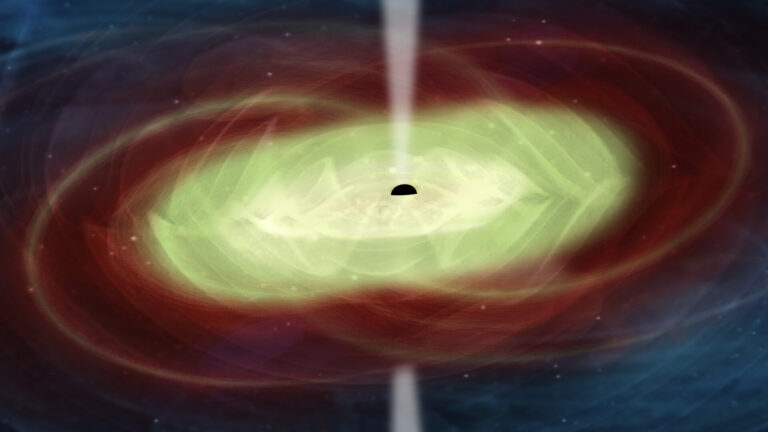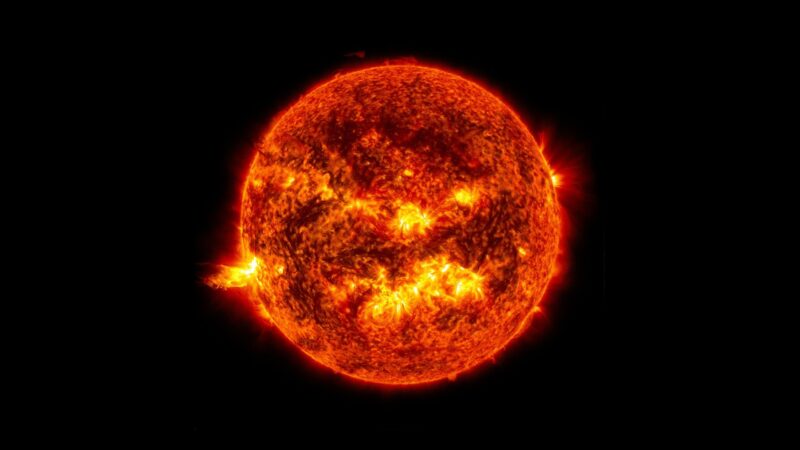Below its bright surface, the Sun has a complex, multi-layered internal structure. Each layer plays an important role in generating the Sun’s light and heat and projecting its influence far beyond what we see.
This article will examine the unique properties and functions of the Sun’s different internal layers.
The Power Source Within
The Sun generates immense energy from its innermost regions, where each layer serves an important role in the nuclear processes and energy distribution that sustains our solar system. This section provides a closer look at the core and surrounding zones.
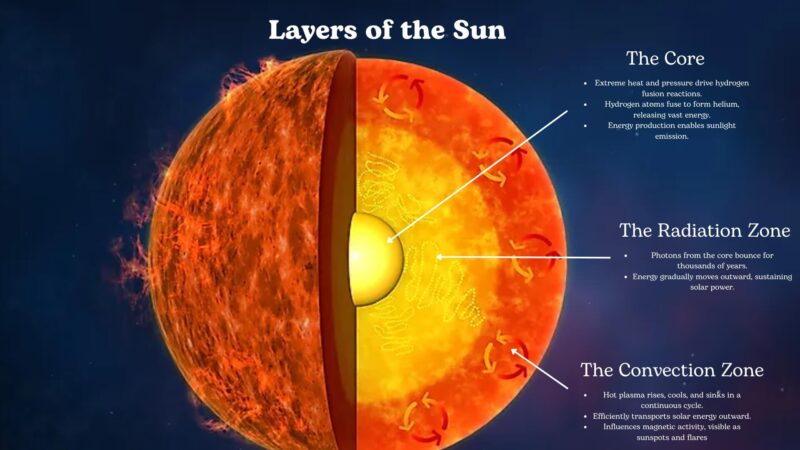
The Core
Located at the center, the core experiences extreme heat and pressure enabling crucial hydrogen fusion reactions. During fusion, hydrogen atoms combine to form helium while releasing tremendous amounts of energy. This energy production is what allows the Sun to emit light and warmth across vast distances.
The Radiation Zone
Above the core lies the radiation zone. Here, photons carrying energy from the core bounce around for thousands of years as the energy slowly makes its way outward. This layer plays a key part in shuttling the Sun’s power to the next level.
The Convection Zone
In the convection zone, hot plasma rises towards the surface before cooling off and sinking back down, where it is reheated and rises again in a continuous cycle. This convection efficiently transports the Sun’s energy outward. It also influences the Sun’s magnetic activity, visible as phenomena like sunspots and solar flares.
Atmospheric Layers of the Sun
The Sun’s atmosphere consists of essential layers critical to various solar phenomena. These regions influence space weather and technology on Earth through effects such as solar flares and coronal mass ejections.
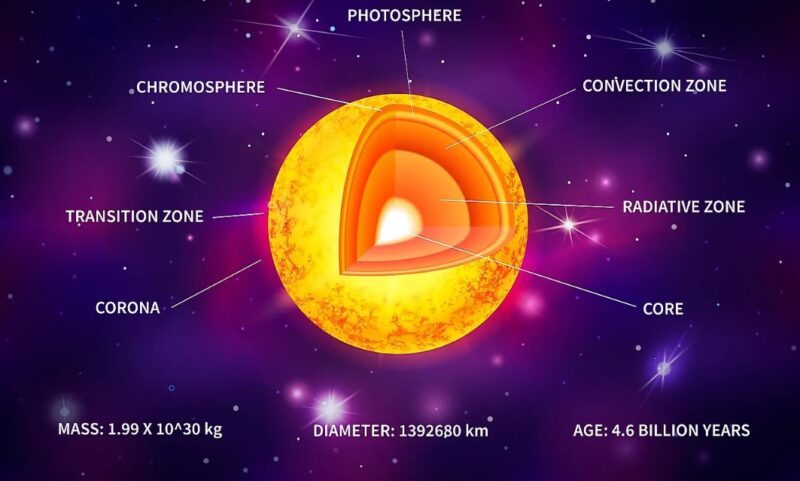
The Photosphere
Considered the Sun’s visible surface, the photosphere is where sunlight originates. Though cooler than the inner layers, it features dynamic changes like sunspots appearing as darker patches.
The Chromosphere
Above lies the chromosphere, where temperature rises with height. Seen during solar eclipses as a reddish glow, studying it helps understand the outer atmosphere.
The Transition Region
This thin, variable area serves as the boundary between the chromosphere and the corona. Temperature increases sharply here, linking inner and outer atmospheric behaviors despite challenges observing it.
Magnetic Field and Solar Activity
Woven throughout the Sun is a dynamic magnetic field originating from plasma movement within layers like the convection zone. This field governs many spectacular solar phenomena.
Sunspots

Appearing as darker patches, sunspots punctuate the photosphere where magnetic flux inhibits convection, lowering surface temperatures. Often found in opposing polarity pairs.
Solar Flares
Occurring near sunspots, magnetic field lines may tangle and erupt with explosive force, equivalent to millions of hydrogen bombs. Flares release radiation across the spectrum.
Coronal Mass Ejections
Unlike electromagnetic flares, CMEs involve large-scale plasma and embedded magnetic field ejected from the corona. When reaching Earth, geomagnetic storms can illuminate auroras and disrupt technologies through induced currents.
The Heliosphere
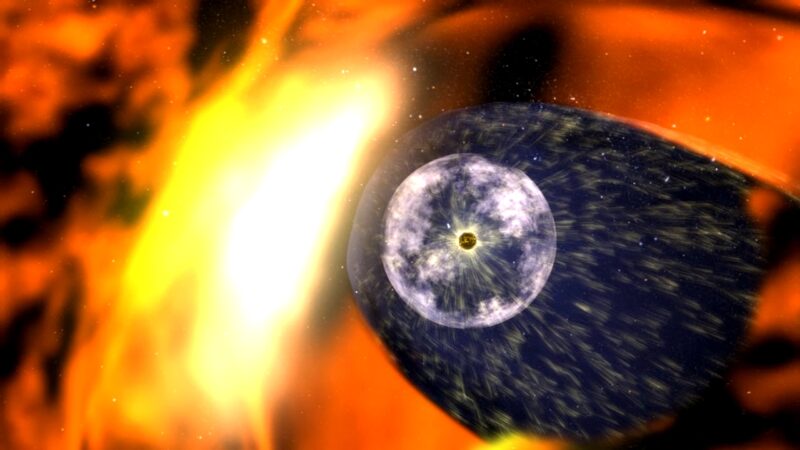
The solar wind, flowing continuously from the corona, creates a vast bubble surrounding our star called the heliosphere. Made up mainly of electrons and protons, the wind travels throughout the solar system while also carrying the magnetic field.
Reaching speeds up to 750 km/s, properties of the solar wind like temperature and velocity fluctuate depending on solar conditions. It varies over the Sun’s 11-year activity cycle, which modulates sunspot numbers and powerful flares/CMEs.
Last Words
The Sun is a complex system with many moving parts that work together to shape its character and influence. The way it communicates through magnetic peaks and troughs is key to understanding its impact closer to home.
Continued study remains crucial so present and future generations can benefit as much as possible from the stable relationship we share with our dominant star.







